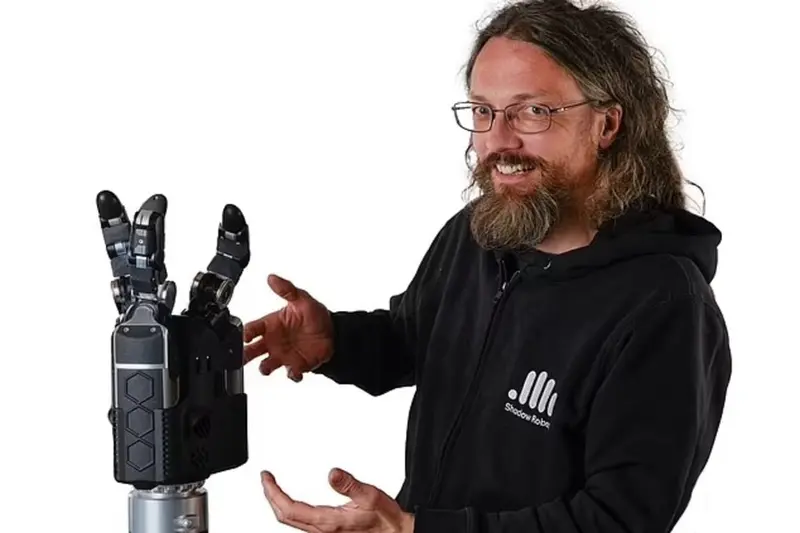The smart and agile hand from the British robotics company Shadow Robot Company resembles a prop from a science fiction movie. It is also super fast, extremely strong, and quite large – twice the size of a human hand. It cannot be damaged by either a press or a hammer.
Such strength will be needed for the hand during the rigorous and often destructive training of artificial intelligence: during lessons of interaction with the world.
This robotic hand has only three fingers. Unlike many other robotic hands created by the company, it is less similar to a human hand.
However, according to Rich Walker, the director of Shadow Robot Company, the bulkiness of the design is a necessary compromise.

What is this three-pronged hand for?
Roboticists have been developing a robotic arm for over four years in collaboration with Google DeepMind, a company focused on researching and creating safe artificial intelligence systems. The primary purpose of the arm is to train AI.
While robots in factory workshops perform simple tasks (such as moving sheets of metal from one place to another), the real world demands more complex devices.
For robots to perform more complex tasks or act autonomously, they will need artificial intelligence. However, the process of training AI can turn out to be particularly costly and damaging for the robot.
Mr. Walker told the publication. Daily Mail “If you’ve ever seen a child learning to walk, at the beginning of the process, they move around clumsily before they start to connect their movements with what they see in front of them.”
If a robot continuously trains AI, the process will be very similar. The only difference is that robots are not as resilient as humans. To solve even a simple task like picking up objects, AI It has to go through thousands of trial and error attempts. Moreover, the initial stages of the learning process are usually so chaotic that the robots often get damaged.
Last year, researchers from the University of California, Berkeley (USA) used work to train AI by collecting laundry through numerous repetitions.

Super strength is a key requirement for the hand.
Mr. Walker explained that what people usually refer to as a touch is called a collision in the robotics community. “Robots typically avoid collisions because collisions are bad; they cause damage,” he said.
To avoid collisions that could crush the robot during training, the company made its new arm extremely rigid and durable. Specialists used a combination of more massive and resilient components along with motor control elements that allow the fingers to move during impacts and avoid damage. By the way, each finger of the robotic arm weighs about 1.2 kilograms.
Each finger is a modular component, so in case of damage, it can be quickly disabled.
Sensitivity is another property.
But to be useful for machine learning, the robotic hand also needs to be sensitive. Beneath the surface of each fingertip are hundreds of tiny cameras that focus on the inner part of the skin.
When the hand grabs an object, these cameras capture how the skin deforms and can determine how hard or soft it might be.
“Three-degree-of-freedom sensors on the middle phalanges provide additional information during grasping and manipulation,” writes the Shadow Robot Company website.
According to Mr. Walker, the hand is currently in production, so it does not yet have a confirmed price. At the same time, the company’s director noted, “This will not be a cheap robot, but it will be cheaper than other robots we have created in the past.”
The lower price was influenced by the fact that the robotic arm is actually cheaper to produce than some others, as it was designed with spare parts and ease of repair in mind.
Although the hand was initially developed for Google DeepMind, Rich Walker says that the robot will be in demand by other companies and research institutions. He added that researchers in the field of robotics he has spoken to are excited about the emergence of new robots “that can be used right now.”
